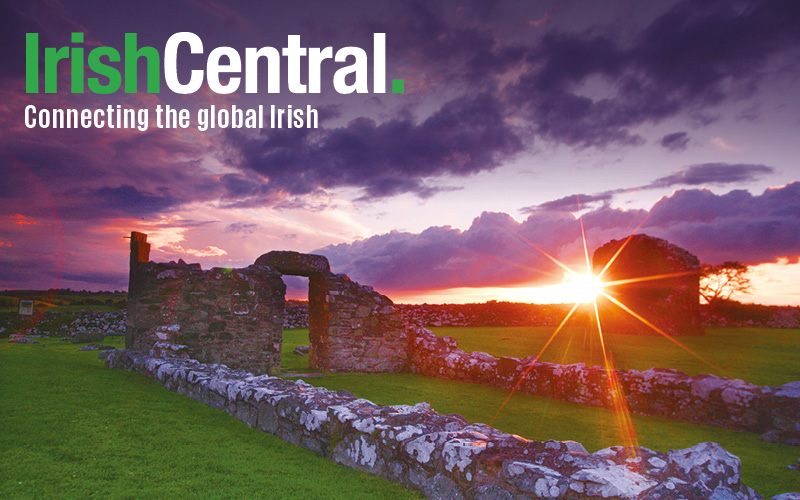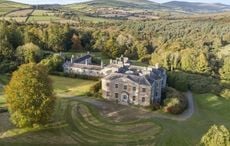It seems to perplex Europeans that Americans consider themselves not just as Americans, but explain that their true identity is a host of various, often very different, nationalities. When questions like “What is your ethnic background?” are answered with, “Well, I’m mostly German, but I’m also Irish,Swedish, British, and a little bit of French,” it isn’t much of a surprise that the Irish, German, Swedish, British or French national retort with “No. You’re an American.”
But in the United States, our immigrant society and the fluidity of the term ‘American’ makes ethnicity something different. With the exception of American Indians we all came here from somewhere else. We are descended from some ancestor who stepped on board a ship or a plane. We remember them for that.
That variation is evident across the United States. The North End in Boston still bustles with Italian festivals every summer. Chicago is home to one of the world’s largest St. Patrick’s Day parades. The Midwest is strewn with German place names, surnames, and Oktoberfests. Louisiana has a distinct French character and the Southwest is as culturally Latino as Latin America itself.
To the perplexed European, it might seem difficult to identify with one culture when one’s ethnic background is so fractured.
But one of the benefits of hailing from a nation rooted in multiculturalism is that it allows the individual to practically choose which one they celebrate. My ancestors were a mix of English, Scottish, Irish, Welsh, and Italian, but my reddish hair, Irish surname, and Roman Catholic faith meant the ‘choice’ was all too clear.
I became entranced by my Irish background after a middle school assignment opened up the world of genealogy to me. I studied the history of Ireland and tried to determine where my family fit into its complex story.
By the time I entered high school as a fourteen-year old freshman, my mind was made up: I would travel to Galway (the city of my forebears) as soon as the opportunity became available. That moment came after my acceptance to the College of the Holy Cross in Worcester—a school renowned for its year-long study abroad programs—including one in Galway.

Quay Street, in Galway City.
As part of the program, Holy Cross asks that students join a club, organization, or sports team to better engage themselves with the host nation. As a political science major, I knew my interests were best suited for some political organization. When I showed up in Galway on my year abroad I set out to find one.
I saw no distinction between the Sinn Feins, Labours, or Renua Irelands. Ultimately, I chose Ógra Fianna Fáil for no other reason than that it was the first organization that offered free stuff. I was officially a Fianna Fáiler.
At the weekly Ógra meetings, we discussed the hot topics of the day. Those ranged from Brexit, to water charges, to the Irish Constitution's eighth amendment—each of which spent a significant amount of time headlining national news.
Listening to the other members’ opinions provided better insight because they were better able to determine the impact and outcomes of certain decisions. The meetings also forced me to keep up-to-date on the local happenings because the discussions required at least a basic understanding of the topic.
One of the most memorable experiences during my Fianna Fáil membership was the annual National Youth Conference held in across the border in Newry, County Down. The event brought the entire Ógra community together to discuss policy matters, vote for new leaders, and create bonding experiences with other Fianna Fáilers from across the country.

Havery photographed with Micheál Martin, Leader of Fianna Fáil, at the National Youth Conference, in Newry.
I saw the Irish electoral system in action for the first time—a process completely counted by hand that increases accountability but takes much longer to complete. The system is totally foreign to an American used to electronic systems that spit out results in a few hours.
That trip also took me to Northern Ireland for the first time. I was totally unaware of the fundamental divisions that ripped the society apart. My fellow Fianna Fáilers explained it in detail, warning me that certain parts of certain places were off-limits to “people like us.” They warned me that the North was “different. It’s just different.”
It was. Newry had a character that was so British in nature, it felt as if we were strolling through a small town in the English lowlands rather than through another part of Ireland. That a country could be so divided on such fundamental lines fascinated me. It significantly motivated my decision to enroll in a class on the Politics of Northern Ireland the next semester.
Not only did we explore Ireland’s northeastern province, but we were also honored to have Micheál Martin, Leader of Fianna Fáil, speak to us at the reception dinner. Although Fianna Fáil has historically been the most successful political party in Irish history, it was severely punished at the polls in 2011 for its poor performance during the Recession, dropping out of government and becoming the third most popular party in Ireland.
That crushing defeat led people to presumptuously declare Martin as the first leader of Fianna Fáil to never hold the office of Taoiseach.
But the following spring, Fianna Fáil surprised pollsters nationally when it bounced back and narrowly missed becoming the largest party in the Dáil again, a turnaround so miraculous that The Irish Times labeled it “The 2016 Rising.” Martin will continue to head Fianna Fáil, and his party’s chances of becoming the Dáil’s largest seem to increase every month. And when they do win, I will have the honor of saying I met and shook hands with An Taoiseach na hÉireann.
It was the practical experience of my Fianna Fáil membership that gave me the opportunity to discuss Irish politics, make Irish friends, and meet Irish politicians. But without the supplemental knowledge I received from my own study, I could not have understood the underlying historical processes that made it the country we see today.
I enrolled in classes that dealt with nineteenth-century Ireland, Cromwellian Ireland, Northern Ireland politics, and contemporary Irish political structures. In my leisure time, I read extensively about the lives of Michael Collins, Éamon de Valera, Hugh O’Neill, and Daniel O’Connell, all while acquiring an understanding of their significance in each particular time period.
I wanted to experience the sights, sounds, and smells that went along with the facts and names. I traveled through the Wicklow Mountains, a journey IRA volunteer Ernie O’Malley made while evading the British during the War of Independence.
I stood at the foot of the General Post Office, the same place where Padraig Pearse proclaimed the independence of the Irish Republic for the first time. I traveled through the rugged roads of Béal na Bláth, the spot where Michael Collins was assassinated by his former compatriots.
I went North and saw the Peace Walls that continue to drive a stake through Northern society’s sectarian communities. I even saw the abandoned ruins of Daniel O’Connell’s birthplace in the Kerry countryside.
One can read all the history possible about a particular time or place, but one needs the freshness of the air, the smell of the flora, the sights of the sky and the earth in order to understand an event the way it was experienced by those who participated in it.
When I returned to the United States that May, my understanding of Ireland and my relationship with it were fundamentally changed. Before leaving, Ireland was a distant land that a few distant ancestors came from and that I kept a vague affinity for.
My year abroad fostered a totally new sense of my cultural identity. As a member of Fianna Fáil, I made lifelong friends that I still keep in contact with. I became attuned to the current affairs that are the result of over eight hundred years of history that I continue to reinforce by avidly reading The Irish Times, Irish Independent and other news outlets.
I even picked up some Gaeilge and determined that yes, Guinness is better-tasting in Ireland than it is in America. Having an Irish last name and attending a Catholic Church is not enough to make me ‘Irish-American.’ Possession of a deeply ingrained cultural appreciation of the ‘old country,’ having the privilege to say Ireland was home for nearly a year, and having an unbreakable bond that will traverse the Atlantic forever is what makes me an Irish-American.
* Dan Haverty is a senior political science major at the College of the Holy Cross, in Worcester. He recently completed a year abroad in Galway.
Read more: How this Reno, Nevada woman became a proud Galway girl




Comments